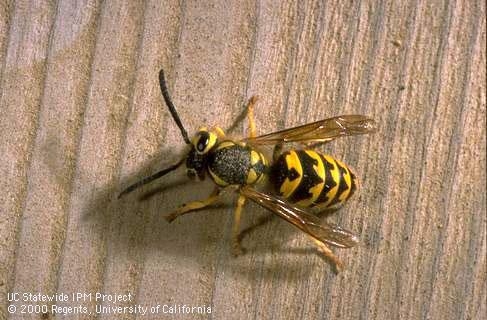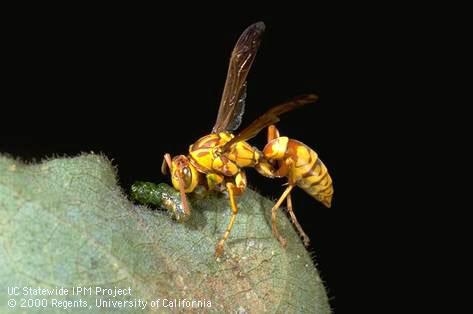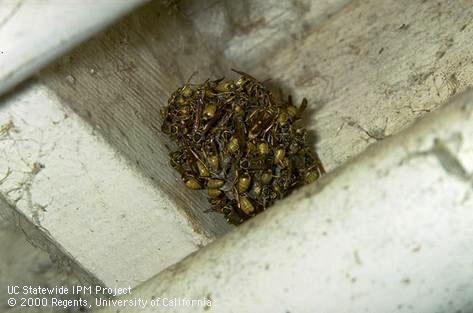Before I knew better, I though what I had building nests in the rafters of my greenhouse were yellow jackets. You know, those yellow and black flying meat-stealers, visiting the patio table for a taste of BBQ'd salmon. The ones that, if you disturb their nest, will do everything they can to defend themselves, including flying up pant legs and stinging like crazy.
My ever-helpful significant other decided that he would take care of the greenhouse dwellers for me. Since the nest was about 10 feet up at the top of the roof, he thought a blowtorch would be the easiest and least risky way, at least for him, to do the deed. Unfortunately, with the nest hanging only centimeters from a plastic roof panel, the greenhouse suffered from the flame of the blowtorch. It was only after this ill-fated attempt to eradicate the greenhouse dwellers that I learned they were not actually yellow jackets, but were instead paper wasps.
Paper wasps look quite a bit like yellow jackets: they are both distinctly black and yellow and both have stingers. If you look closer, paper wasps are more slender, with skinnier waists and thinner wings. They look more relaxed in flight—they carry their long legs not up close to their bodies like yellow jackets, but dangling down. One of the biggest differences is their tolerance. Yellow jackets are notoriously aggressive, while paper wasps are pretty laid back and will not attack unless you are very close and they feel threatened.
As an example of their non-aggressiveness, I carried a small paper bag of diatomaceous earth from the greenhouse across my yard. When I started to open the bag, I realized there was a paper wasp nest attached to the side, and hanging on the nest were 2 wasps tending the nest. Not only were they not aggressive, they didn't move at all. They clung to the nest as I scooped out enough for the job, closed up the bag, and carried it back to the greenhouse. I apologized for disturbing them.
Paper wasps are beneficial insects in the garden because they prey on other insects that we consider pests—caterpillars, flies, and beetles. They also feed on flower nectar and honeydew from insects.
They nest in protected areas such as under eaves or tree branches, in attics, bird houses and greenhouses. Unless the nest is really close to a doorway or heavily trafficked area, it should be left alone. If you see a nest being built somewhere problematic, remove it early in the season as it's just being built.
For a reference guide to help you distinguish between yellow jackets, paper wasps and other daubers, click here to view IPM Pest Note No. 7450. This Pest Note also contains information (including links to three wonderful demonstration videos) on identification, life cycle and management of social wasps.



